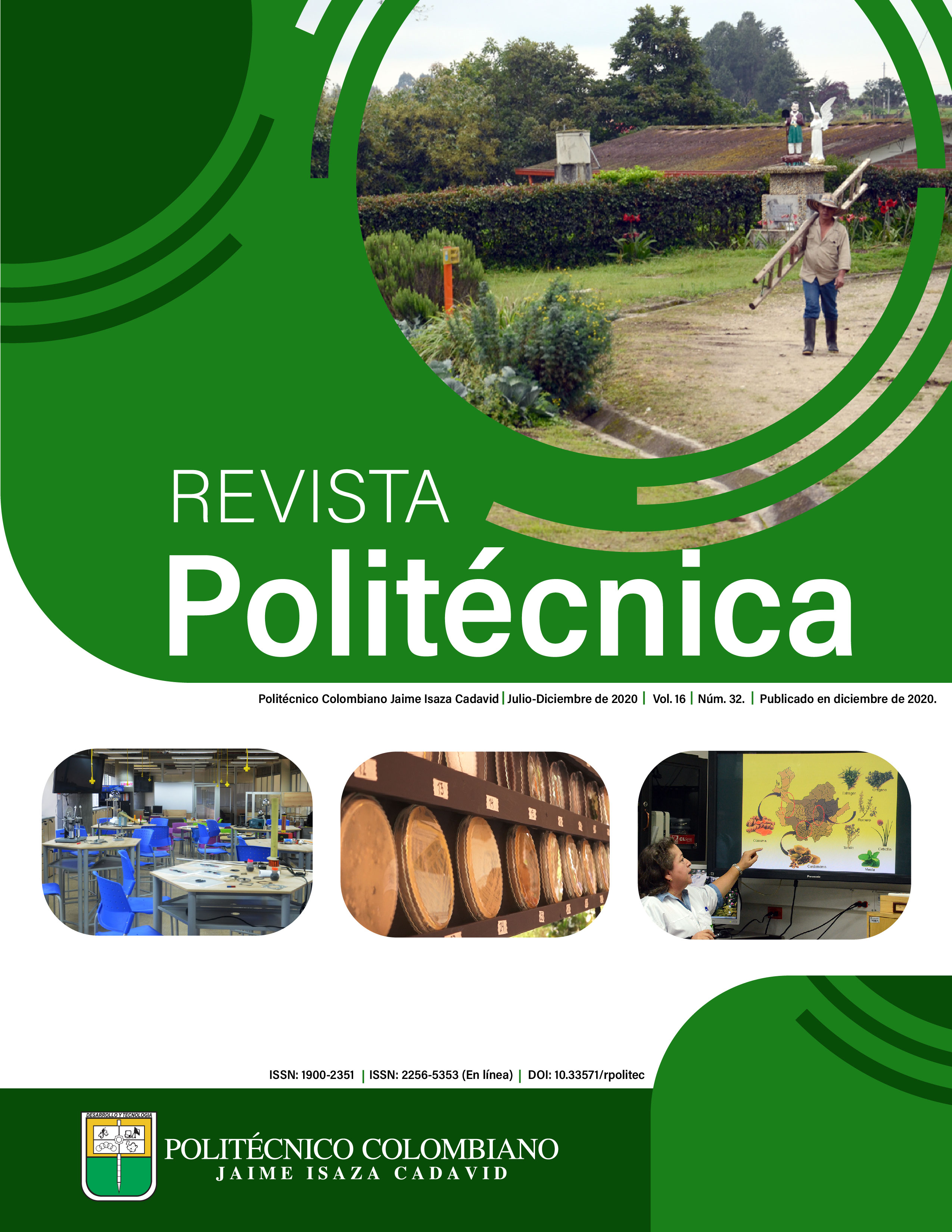Influence of the solidity and the number of blades in a vertical axis turbine type h-darrieus
DOI:
https://doi.org/10.33571/rpolitec.v16n32a1Keywords:
Solidity, turbine, efficiency, chord, hydrokineticsAbstract
The following study proposes the analysis of a Darrieus H-type vertical axis hydrokinetic turbine that can be implemented in regions not interconnected to the Colombian electricity system, especially coastal areas. The objective of the study is to analyze the number of blades in the efficiency of the hydrokinetic turbine, for this, 27 types of rotors are proposed, in which, the number of blades is varied from 2 to 10 for 3 different solidity values. Concluding that from 3 blades the negative torques produced are reduced, increasing the capacity of auto-start, however, when the number of blades increases the total torque generated by the turbine decreases which leads to a decrease in efficiency.
El siguiente estudio propone el análisis de una turbina hidrocinética de eje vertical tipo H-Darrieus que puede ser implementada en las regiones no interconectas al sistema eléctrico colombiano en especial las zonas costeras. El objetivo del estudio es analizar el número de álabes en la eficiencia de la turbina hidrocinética, para esto se proponen 27 tipos de rotores, en los cuales, se varía el número de álabes desde 2 hasta 10 para 3 valores de solidez diferentes. Concluyendo que a partir de 3 álabes se reducen los torques negativos producidos, incrementando la capacidad de autoarranque, sin embargo, cuando el número de álabes aumenta el torque total generado por la turbina disminuye lo que conlleva a una disminución en la eficiencia.
Article Metrics
Abstract: 718 PDF (Español (España)): 304 HTML (Español (España)): 723PlumX metrics
References
D. Kerr, «Marine energy», Philos. Trans. R. Soc. A Math. Phys. Eng. Sci., vol. 365, n.o 1853, pp. 971-992, 2007.
N. A. García, R. H. T. Holguín, y D. A. O. Urrea, ZONAS NO INTERCONECTADAS - ZNI Diagnóstico de la prestación del servicio de energía eléctrica 2017 Superintendencia Delegada para Energía y Gas Combustible, n.o 1. 2017.
S. Del Río Sánchez, «Diseño de un aerogenerador tipo H-Darrieus y estudio de la influencia del ángulo de pitch , mediante Mecánica de Fluidos Computacional», p. 109, 2017.
J. R. Baker, FEATURES TO AID OR ENABLE SELF STARTING OF FIXED PITCH LOW SOLIDITY 6 r q Ct ( oO άφ ( l ), vol. 15. Elsevier BV, 1983.
Y. MIYAKE, K. KOIKE, T. TSUGAWA, y S. MURATA, «Perfomance Characteristics of High Speed-Type Cross Flow Turbine», Bull. JSMe, vol. 27, p. 8, 1984.
M. J. Khan, M. T. Iqbal, y J. E. Quaicoe, «Design Considerations of a Straight Bladed Darrieus Rotor for River Current Turbines A )», vol. 5, n.o 2, 2006.
R. Ã. Dominy, P. Lunt, A. Bickerdyke, y J. Dominy, «Self-starting capability of a Darrieus turbine», vol. 221, pp. 111-120, 2007.
M. Shiono, K. Suzuki, y S. Kiho, «Experimental study of the characteristics of a Darrieus turbine for tidal power generation», Electr. Eng. Japan (English Transl. Denki Gakkai Ronbunshi), vol. 132, n.o 3, pp. 38-47, 2000.
Y. M. Dai y W. Lam, «Numerical study of straight-bladed Darrieus-type tidal turbine», Proc. Inst. Civ. Eng. - Energy, vol. 162, n.o 2, pp. 67-76, 2009.
C. A. Consul, R. H. J. Willden, E. Ferrer, y M. D. Mcculloch, «Influence of Solidity on the Performance of a Cross-Flow Turbine», pp. 484-493, 2009.
I. S. Hwang, Y. H. Lee, y S. J. Kim, «Optimization of cycloidal water turbine and the performance improvement by individual blade control», Appl. Energy, vol. 86, n.o 9, pp. 1532-1540, 2009.
R. Gosselin, G. Dumas, y M. Boudreau, «Parametric study of H-Darrieus vertical-axis turbines using uRANS simulations», 2013.
M. H. Mohamed, «Impacts of solidity and hybrid system in small wind turbines performance», Energy, vol. 57, pp. 495-504, 2013.
O. López, D. Meneses, B. Quintero, y S. Laín, «Computational study of transient flow around Darrieus type cross flow water turbines», J. Renew. Sustain. Energy, vol. 8, n.o 1, 2016.



 _
_






















